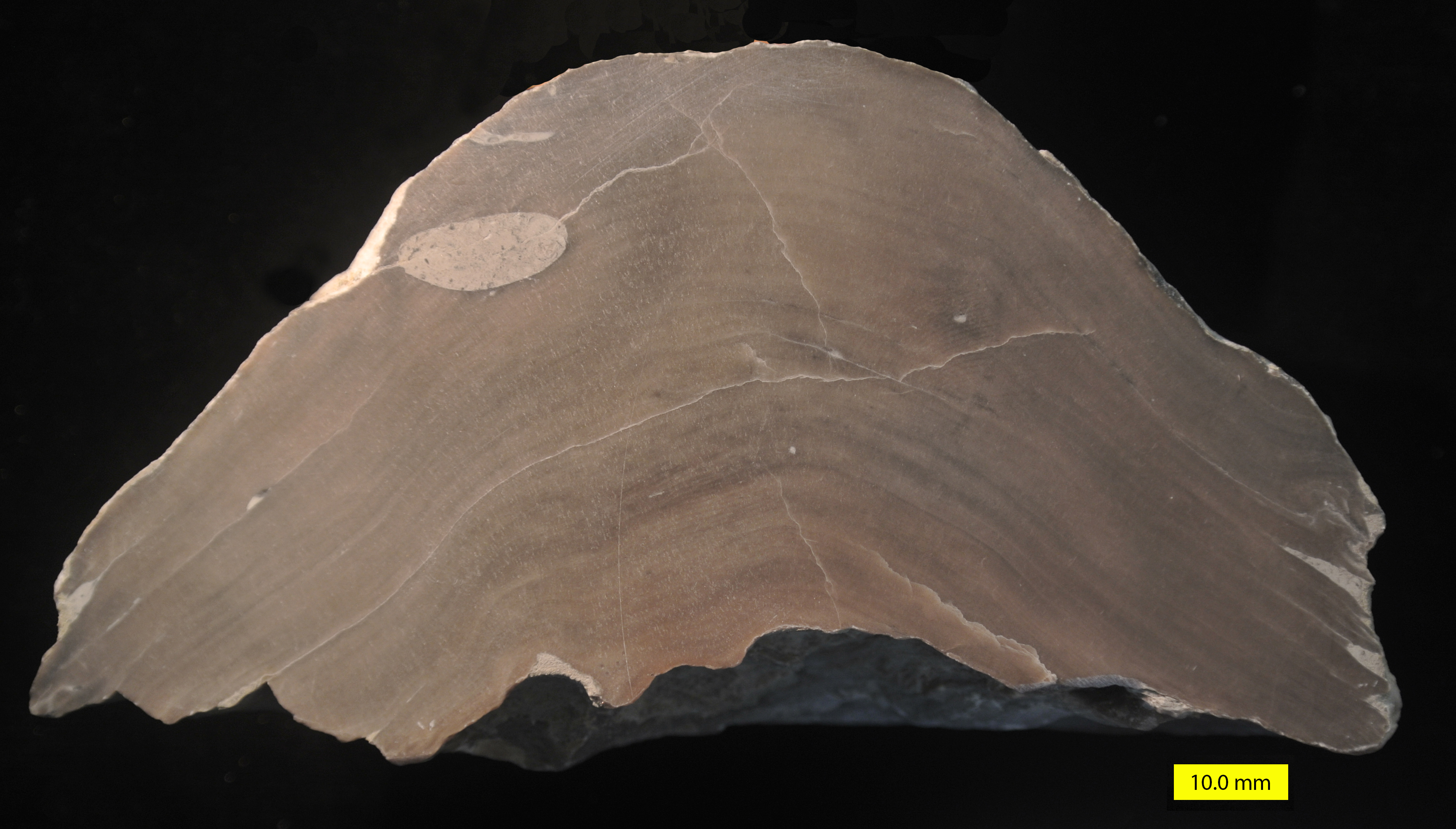Osprioneides on:
[Wikipedia]
[Google]
[Amazon]
 ''Osprioneides'' is an
''Osprioneides'' is an
 ''Osprioneides'' is an
''Osprioneides'' is an ichnogenus
An ichnotaxon (plural ichnotaxa) is "a taxon based on the fossilized work of an organism", i.e. the non-human equivalent of an artifact. ''Ichnotaxa'' comes from the Greek ίχνος, ''ichnos'' meaning ''track'' and ταξις, ''taxis'' meaning ...
of unbranched, elongate borings (a type of trace fossil
A trace fossil, also known as an ichnofossil (; from el, ἴχνος ''ikhnos'' "trace, track"), is a fossil record of biological activity but not the preserved remains of the plant or animal itself. Trace fossils contrast with body fossils, ...
) in lithic substrate with oval cross−section, single−entrance and straight, curved or irregular course. ''Osprioneides kampto'' Beuck and Wisshak, 2008 is the largest known Palaeozoic
The Paleozoic (or Palaeozoic) Era is the earliest of three geologic eras of the Phanerozoic Eon.
The name ''Paleozoic'' ( ;) was coined by the British geologist Adam Sedgwick in 1838
by combining the Greek words ''palaiós'' (, "old") and '' ...
boring trace. It occurs in the Ordovician
The Ordovician ( ) is a geologic period and system, the second of six periods of the Paleozoic Era. The Ordovician spans 41.6 million years from the end of the Cambrian Period million years ago (Mya) to the start of the Silurian Period Mya.
T ...
and Silurian
The Silurian ( ) is a geologic period and system spanning 24.6 million years from the end of the Ordovician Period, at million years ago ( Mya), to the beginning of the Devonian Period, Mya. The Silurian is the shortest period of the Paleoz ...
(Wenlock) of Baltica
Baltica is a paleocontinent that formed in the Paleoproterozoic and now constitutes northwestern Eurasia, or Europe north of the Trans-European Suture Zone and west of the Ural Mountains.
The thick core of Baltica, the East European Craton, ...
.
The borings are up to 120 mm long measuring 5–17 mm in diameter (Beuck et al., 2008) . The distribution of ''Osprioneides'' is more environmentally limited than that of ''Trypanites
''Trypanites'' is a narrow, cylindrical, unbranched boring which is one of the most common trace fossils in hard substrates such as rocks, carbonate hardgrounds and shells (Bromley, 1972). It appears first in the Lower Cambrian (James et al ...
'' in the Silurian
The Silurian ( ) is a geologic period and system spanning 24.6 million years from the end of the Ordovician Period, at million years ago ( Mya), to the beginning of the Devonian Period, Mya. The Silurian is the shortest period of the Paleoz ...
of Saaremaa
Saaremaa is the largest island in Estonia, measuring . The main island of Saare County, it is located in the Baltic Sea, south of Hiiumaa island and west of Muhu island, and belongs to the West Estonian Archipelago. The capital of the isla ...
, Estonia
Estonia, formally the Republic of Estonia, is a country by the Baltic Sea in Northern Europe. It is bordered to the north by the Gulf of Finland across from Finland, to the west by the sea across from Sweden, to the south by Latvia, an ...
(Baltica
Baltica is a paleocontinent that formed in the Paleoproterozoic and now constitutes northwestern Eurasia, or Europe north of the Trans-European Suture Zone and west of the Ural Mountains.
The thick core of Baltica, the East European Craton, ...
). ''Osprioneides'' probably occurred only in large hard substrates of relatively deepwater muddy bottom open shelf environments. ''Osprioneides'' were relatively rare, as compared to ''Trypanites
''Trypanites'' is a narrow, cylindrical, unbranched boring which is one of the most common trace fossils in hard substrates such as rocks, carbonate hardgrounds and shells (Bromley, 1972). It appears first in the Lower Cambrian (James et al ...
''-''Palaeosabella'' borings in the Wenlock of Saaremaa
Saaremaa is the largest island in Estonia, measuring . The main island of Saare County, it is located in the Baltic Sea, south of Hiiumaa island and west of Muhu island, and belongs to the West Estonian Archipelago. The capital of the isla ...
.
References
* Burrow fossils {{trace-fossil-stub